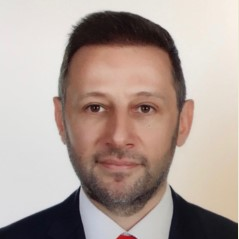Evolving Concepts in Implant Dentistry
A special issue of Medicina (ISSN 1648-9144). This special issue belongs to the section "Dentistry".
Deadline for manuscript submissions: closed (1 November 2023) | Viewed by 4184
Special Issue Editor
Interests: dental implants; oral surgical procedures; dental implantation; alveolar bone grafting; sinus floor augmentation; dental prosthesis; implant supported image guided surgery; anatomy and histology; histomorphometry; biomaterials; effects; long term; immediate implantation; immediate loading
Special Issue Information
Dear Colleagues,
Following the invention of the "osseointegration" phenomenon by Professor Branemark, dental implantology has rapidly evolved into the standard of care in the treatment of tooth loss. Thanks to a cascade of clinical and technological advancements, many cases that were not treatable by means of a fixed prosthesis in the past can now be rehabilitated seamlessly with implant-supported fixed prostheses. Any newly evolving discipline requires the output of robust science provided by proper research results, thereby fulfilling the information gaps that eventually became the clinical guide. With this Special Issue, I invite researchers and clinicians to contribute to this magnificent field with original research that will be the foundation for the upcoming advancements, improving the lives of many patients.
Prof. Dr. Volkan Arisan
Guest Editor
Manuscript Submission Information
Manuscripts should be submitted online at www.mdpi.com by registering and logging in to this website. Once you are registered, click here to go to the submission form. Manuscripts can be submitted until the deadline. All submissions that pass pre-check are peer-reviewed. Accepted papers will be published continuously in the journal (as soon as accepted) and will be listed together on the special issue website. Research articles, review articles as well as short communications are invited. For planned papers, a title and short abstract (about 100 words) can be sent to the Editorial Office for announcement on this website.
Submitted manuscripts should not have been published previously, nor be under consideration for publication elsewhere (except conference proceedings papers). All manuscripts are thoroughly refereed through a single-blind peer-review process. A guide for authors and other relevant information for submission of manuscripts is available on the Instructions for Authors page. Medicina is an international peer-reviewed open access monthly journal published by MDPI.
Please visit the Instructions for Authors page before submitting a manuscript. The Article Processing Charge (APC) for publication in this open access journal is 1800 CHF (Swiss Francs). Submitted papers should be well formatted and use good English. Authors may use MDPI's English editing service prior to publication or during author revisions.
Keywords
- dental implantation
- alveolar bone grafting
- sinus floor augmentation
- dental prosthesis
- implant supported image guided surgery
- biomaterials






